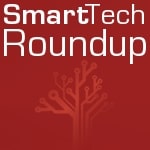SMARTtech Roundup: What’s the word of the week?

Blended Schools & Tools
Alabama Digital Boost. The Superintendent of Huntsville City Schools spoke to the district’s successes with digital learning, noting a shift to digital textbooks and plans to boost distance learning to allow teachers to interact with students via internet for extra help.
CMS goes BYOT. Charlotte-Mecklenburg Schools announced plans to launch its BYOT Initiative in September with about 20 pilot schools. Hey CMS, check out Getting Smart guest author Perry Correll’s piece: 5 Wireless Considerations When Introducing BYOD at your School.
You got that right. Teachers in Virginia learned about blended learning this week. Technology Director Adam Seldow explained that blended learning is a matter of “taking rich digital assets that are in the world and seamlessly integrating them in our already excellent face-to-face instruction,” telling the teachers, “If you embrace blended learning, you have the ability to differentiate at a level that wasn’t possible before.” We agree.
Winning combination. Chicago Virtual Charter School was named a Top School in Chicago CVCS is an innovative public school in Chicago and a pioneer in blended learning – combining online learning with onsite instruction. CVCS uses the award-winning curricula, services and tools provided by K12 Inc.
Keeping Tabs on Tablets
OL/TPC? The non-profit organization One Laptop Per Child (OLPC) announced that it is currently developing a new version of its XO device – a laptop/tablet hybrid.
Access is the word of the week. The Hook reported on Charlottesville’s BLAST Program in Learning curve: Tablets in city schools get mixed reviews. The piece pointed out the challenges along the road to the $2.4-million tablet initiative, revealing important considerations for leaders who are planning similar programs. Connectivity and other barriers to student access were also the topic of articles this week on eschoolnews and the Denver Post. Speaking of access, be sure to check out today’s release “Funding the Shift to Digital Learning” from Digital Learning Now!, the Foundation for Excellence in Education and Getting Smart.
Mac Math. The Cult of Mac blog revealed how it’s possible to recoup the cost of purchasing an iPad by switching purchasing eTextbooks. Our very own Sarah Cargill talked etextbooks this week on EdWeek, asking “Should Your School Replace Textbooks with EReaders?”
Tablet duel. Lenovo announced plans to challenge Microsoft’s Surface with their own $300 Windows tablet.
Digital Developments
PARCC Prototypes. PARCC released its first set of item and task prototypes for both English language arts/literacy and mathematics. The prototypes are illustrative of how the critical content and skills found in the Common Core State Standards (CCSS) may be measured by the PARCC assessments set to be administered for the first time in 2014-2015. The prototype items are early samples or models that may be helpful in building the actual assessment items. They also give educators and the public an early look at what next generation assessment items may look like.
Walking the talk. A group of graduate students at the Milledgeville, Ga.-based campus used iBookstore to publish an eTextbook filled with information and advice for educators hoping to better incorporate technology in their classroom lessons. “Using Technology in Education,” is a student-created textbook available for the iPad and available for free.
mLearning & mPrepping. Chicago-based startup BenchPrep provides interactive test prep courses and announed this week that they are adding several new publishing partners, including Pearson Education, Inc.,O’Reilly Media, Inc., and Microsoft Press. The new partnerships put the company on track to offer 200 courses by the end of September, up from 120.
Steamy STEM Gems
STEM heating up in Arizona. In an effort to build a more globally competitive workforce, Helios Education Foundation and Science Foundation Arizona are launching an initiative to bolster science, technology, engineering and math curriculums across the state. Helios is investing more than $4 million over three years to build a statewide STEM Knowledge Management system. Plans call for issuing an RFP to Arizona schools to win seed funding and technical support to integrate STEM education into their classrooms.
But how do you pronounce that? Georgia Southern University has established a new institute for interdisciplinary STEM (Science, Technology, Engineering and Math) Education (I2STEMe) that will support thematic grant writing, research and outreach. The Institute is committed to excellence in primary, secondary and higher education STEM teaching and learning with a focus on rural and diverse populations under-represented in STEM areas.
Tarheel Portal. Efforts to create an online portal of North Carolina’s education resources have been enhanced by a $25,000 grant from Cisco Systems to the NC STEM Learning Network. The grant announced last week will help build the online tool for use by parents, teachers and students interested in learning more about science, technology, engineering and mathematics (STEM) education. The new site also will have interactive features to allow seamless communication between resources and the public and provide background information on STEM-related careers.
Getting to the Core
CC news that schools can use. Curriculum Associates introduced an all-new print program to ensure student success on CCSS. Built specifically for the new standards and using the language of the CCSS, Ready™ Common Core offers students in grades 3–8 rigorous instruction and practice in math and reading while also offering teachers multilevel resources and tools to easily implement these lessons.
Getting on the same page. Core Challenge co-founder Jon Wray shared his view on why we need the Common Core Standards on the CNN School of Thought blog, noting that with the CCSS “we’ll all be on the same page so teachers, parents and students across the country can discuss and share ideas to help each other teach and learn better.”
Not “pretty much the same.” The Harvard Education Letter published Nine Ways the Common Core Will Change Classroom Practice – which include greater focus, coherence, emphasis on practices, more nonfiction and a focus on evidence.
Come On Get App-y
What would Maria think? GeekDad reviewed Montessori Apps for the iPhone (making this GeekMom who just happens to be the proud parent of a Montessori Kindergarten student pretty excited).
For the digital native on your shopping list. Babble offered a comprehensive list of The Top 50 Apps for Kids. Kids’ apps not your thing? How about 50 Essential Edtech Tools by Category?
Higher, Deeper, Further, Faster Learning
A different kind of design challenge. iNACOL’s Competency Works released a new report, The Art and Science of Designing Competencies. Authored by Chris Sturgis, the paper offers expertise from the field on the art and science of designing competencies, as well as the people, processes and professional development parts of the equation.
Mark your calendar, California. The California State University, the nation’s largest four-year university system, has selected Pearson to launch Cal State Online, a fully online program designed to increase access to higher education. Cal State Online will launch in January 2013 with a selection of undergraduate degree completion and professional master’s programs.
Polish that resume. Inver Hills Community College in Minnesota posted an opening for a Competency Based Education instructor to teach undergraduate courses in the fall. We think this is a pretty cool “sign of the times” in higher education, although we hope that eventually all job postings will require proficiency in competency-based education.
More national press for digital learning. NBC News reported on the digital shift – from elementary classrooms to college campuses, quoting Karen Cator who explained that, with technology, “the opportunity to learn has grown exponentially.”
MOOCs and more. Campus Technology pulled together a number of recent studies on higher education trends and technology that point to digital learning as the future – citing statistics from Pew Research Center, a recent report from Elon University’s School of Communications, Aspen Institute and others.
The Big “D”
The future of archiving? This little story on big data is pretty mind-blowing. Harvard researchers were able to successfully encode an entire book into DNA and then accurately read the text back. Human Genomes Project Director said of the development, “A device the size of your thumb could store as much information as the whole internet.” The team took the digital version of a book and translated it into DNA coding, creating nearly 55,000 strands to store the text. Each strand comprised a section of the text and indicated where the text belonged in the sequence of the book. From there, the data was stored sequentially.
Disclosures: K12 Inc, Pearson, and Curriculum Associates are Getting Smart Advocacy Partners.




0 Comments
Leave a Comment
Your email address will not be published. All fields are required.